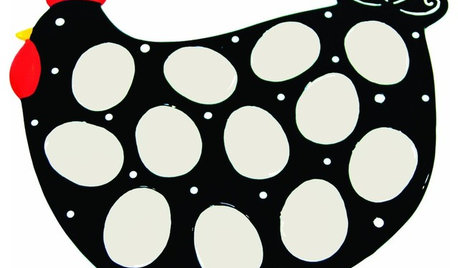Monarchs Not Laying Eggs
susanlynne48
12 years ago
Related Stories

FLOWERS AND PLANTSHelp Monarchs and Other Butterflies by Planting Common Milkweed
Summer-blooming Asclepias syriaca is an important larval host plant for the monarch butterfly and attracts a number of pollinating insects
Full Story
GARDENING FOR BUTTERFLIESBe a Butterfly Savior — Garden for the Monarchs
Keep hope, beauty and kindness alive in the landscape by providing a refuge for these threatened enchanters
Full Story
FALL GARDENINGWhat Monarch Butterflies Taught Me About Garden Design
Thinking like a butterfly leads to fresh perspectives in the garden and in life
Full Story
HOLIDAYS16 Creative Ways to Hide Easter Eggs
Crack of dawn on Sunday not your ideal thinking time? Just follow our creative egg-hiding ideas and pretend Peter Cottontail did the work
Full Story
SHOP HOUZZShop Houzz: The Incredible Egg
Kick off your day with eggs and cheerful sunny-side-up accessories
Full Story0

PRODUCT PICKSGuest Picks: Egg Platters to Keep Those Devils in Their Place
You just might cluck with delight over these perfectly portioned egg plates for Easter and beyond
Full Story
DECORATING GUIDESThe Enduring Appeal of the Egg Basket
Hardworking wire baskets are flying the coop for a life inside, appearing as storage, organizers and decor
Full Story
FARM YOUR YARDCollecting Rainwater and Eggs From a California Chicken Coop
See how a butterfly roof helps a hen home’s design soar into double-duty territory
Full Story
GARDENING GUIDESGreat Design Plant: Asclepias Incarnata for a Butterfly Garden
Beautiful swamp milkweed makes it easy to help monarchs and other pollinators in eastern U.S. gardens
Full Story
LANDSCAPE DESIGNLay of the Landscape: French Garden Style
Symmetry and geometry define this decorous landscape style, appropriate for both grand gardens and intimate spaces
Full Story





ladobe
wifey2mikey
Related Professionals
Clemson Landscape Architects & Landscape Designers · Manorville Landscape Architects & Landscape Designers · Finneytown Landscape Architects & Landscape Designers · Wakefield Landscape Contractors · Clark Landscape Contractors · The Woodlands Landscape Contractors · Twin Falls Landscape Contractors · Antioch Landscape Contractors · Kansas City Fence Contractors · Jacksonville Window Contractors · Riverside Window Contractors · Marietta Window Contractors · Baileys Crossroads Window Contractors · Poinciana Window Contractors · Sarasota Window Contractorsbutterflymomok
ladobe
butterflymomok
caterwallin
ladobe
susanlynne48Original Author
wifey2mikey
ladobe
susanlynne48Original Author
butterflymomok
ladobe
bandjzmom
organic_kitten
mechelle_m
susanlynne48Original Author